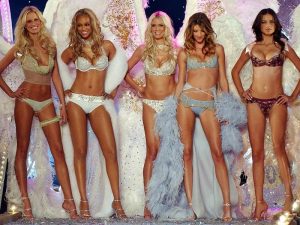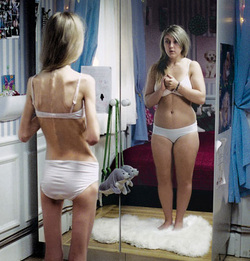As it is well known, fast Fashion is under serious scrutiny for its negative environmental impacts as a result of the extreme volume of clothing produced and poor end of life planning for products. I find that most of the blame is placed on large companies and what or how they produce, but less emphasis is on how they advertise. If you conduct a Google search using the phrase “fast fashion sustainability issues” the top results include statements such as:
- Environmental pollution due to cheap synthetic fibres and chemical dyes,
- By 2030 it is predicted the industry’s water consumption will increase by 50%,
- Fast fashion under fire for human rights violations and supply chain practices, and
- Insatiable appetite for fashion.
However, products produced and the speed of production are not the only fashion-related sustainability issues, the marketing of these products have sustainability implications as well. This association is significantly lacking in the key search results, as well as majority of the dialogue surrounding this industry. That being said, a result of fashion marketing is alluded to in the final bullet point above. Advertising for clothing strongly suggests that what you wear defines who you are, and makes people feel a need to use purchases to compensate for their shortfalls. There is constant pressure to reinvent oneself, be better or more attractive and the result is often a longing to buy more.
 A key player in fashion advertising and induced purchase pressure is the modelling industry. This female dominated industry is granted admiration and is associated with prestige, status and desire. Well-known models get to flaunt luxurious and trendy clothes that are generally considered symbols of status. These individuals become role models and public figures within society and contribute to fundamental norms and ideals.
A key player in fashion advertising and induced purchase pressure is the modelling industry. This female dominated industry is granted admiration and is associated with prestige, status and desire. Well-known models get to flaunt luxurious and trendy clothes that are generally considered symbols of status. These individuals become role models and public figures within society and contribute to fundamental norms and ideals.

Sustainability on the other hand, is one thing that modelling does not appear to have any association with- in positive or negative contexts. I find this disconcerting, as I have identified many reasons as to why modelling is unsustainable. Such reasons include:
- Encouragement of constant consumption and element of circular economy;
- Promotion of extreme individualism and need to buy products that establish differentiation;
- High association with the makeup industry- which lacks a strong foundation in environmental sustainability;
- Trend of a slim female figure, leading to increased prevalence of eating disorders and body dismorphia; and
- A lack of pressure or accountability to encourage sustainable practices.
Not only does this industry harm environmental sustainability, but it also influences the economic and social realms of sustainability. Unhealthy outcomes such as eating disorders impact individual health practices, as well as social interaction. Women judge their own bodies more harshly, as well as other’s, which does not contribute to sustainable health practices.

Due to the above reasons, I cannot help but wonder how this industry has avoided sustainable scrutiny and if there are any changes expected in the future?
In todays globalised economy, it is important to pay attention to all aspects of business. I enjoy this stance on the fashion industry because it is a fresh perspective on a highly debated subject. Something that came to mind while I was reading was that over consumption is a symbol of wealth and status. Celebrities and models with overflowing closets and packed makeup drawers are idolized and envied for their possessions. Some are even ridiculed for repeating an outfit! These role models could be investing in sustainable brands and causes just through purchase decisions. Tackling issues like this takes just the right people to be involved to make a real impact.